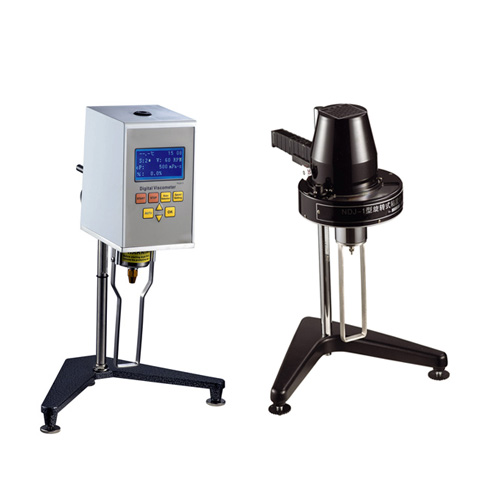
A viscometer is an instrument used to measure the viscosity of fluids (liquids and gases). Viscosity is a physical quantity that expresses the internal friction that occurs inside the fluid when the fluid is flowing. It is the ability of the fluid to resist deformation and is an important indicator for identifying certain finished or semi-finished products.
The rotational viscometer is used to measure the viscous resistance and liquid dynamic viscosity of the liquid, and is widely used to measure the viscosity of various fluids such as oil, paint, plastic, food, medicine, cosmetics, and adhesive products. The principle of operation is that the motor is the power, and the drilling fluid sample is injected into the annular space between the float and the outer sleeve during measurement. The motor drives the rotor to connect the outer sleeve to rotate at a certain speed. The rotation of the outer sleeve in the sample will exert a certain torque on the float, and the rotation of the reaction force of the torsion spring is displayed on the dial.
Factors that are likely to cause failure of the rotational viscometer:
- Most instruments need to adjust the level, pay attention to the level problem at any time after replacing the rotor and adjusting the height of the rotor and during the measurement process, otherwise it will cause reading deviation or even fail to read.
- Some instruments need to be equipped with a protective frame, read the instructions carefully and install according to the regulations, otherwise it will cause reading deviation.
- Determine whether it is an approximate Newtonian fluid. For non-Newtonian fluid, the rotor, speed and rotation time should be specified after selection, so as not to misunderstand that the instrument is not accurate. Although the viscometer is simple in structure and easy to use, if it is not used correctly, a qualified instrument cannot obtain accurate measurement results, which will affect product quality.
Maintenance of rotational viscometer:
- The float and the outer sleeve should be cleaned in time after each test, and the indentation, wear or other damage should be checked regularly.
- The viscometer in normal use does not need to be refueled or lubricated.
- Remove the outer sleeve of the float during transportation to avoid bending of the float shaft and damage to the outer sleeve, and regularly test the bearing of the float shaft.
- In the absence of samples, operate the instrument at 3rpm or 6rpm to observe the operating status of the float and the outer sleeve, and there should be no fluctuations exceeding ±1. Insensitive float shaft bearings should be replaced in time.
